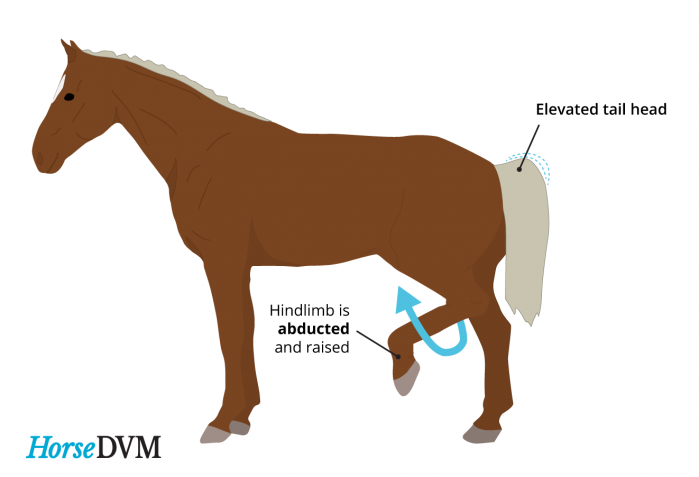
Shivering in a Thoroughbred mare
This post-mortem case report describes an 11-year old thoroughbred mare, presented with neuro-muscular signs. The left hind limb moved in a jerky fashion and had an odd intermittent spastic hyperflexion, just as in shivering disease. The right forelimb was rigid and movement appeared like radial nerve paralysis, but she did not have a classical dropped shoulder and she was able to fix the elbow.
On autopsy, the spinal cord at the level of C3-C4 and C4-C5 had a small, right-sided lesion. There was no sign of denervation atrophy of the left hind gastrocnemius muscle. The clinical and post-mortem findings were consistent with equine shivers.
Shivering is a rare neuro-muscular disease in horses that may be misdiagnosed as stringhalt. Differentation between these two diseases can be made only by clinical signs. In shivering, the affected limb is intermittently hyper-flexed, abducted, and held in a spastic state. Stringhalt is characteristic of a leg that is regularly and moderately flexed towards the abdomen and returned to the ground immediately in one motion (watch video below). The prognosis of shivers is poor and the condition is progressive, chronic, and debilitating. There is no therapy, and euthanasia is recommended when the disease progresses.
> From: Davies, Can Vet J 41 (2000) 128-129. All rights reserved to Harcourt-BraceCanada Inc.. Click here for the online summary.


